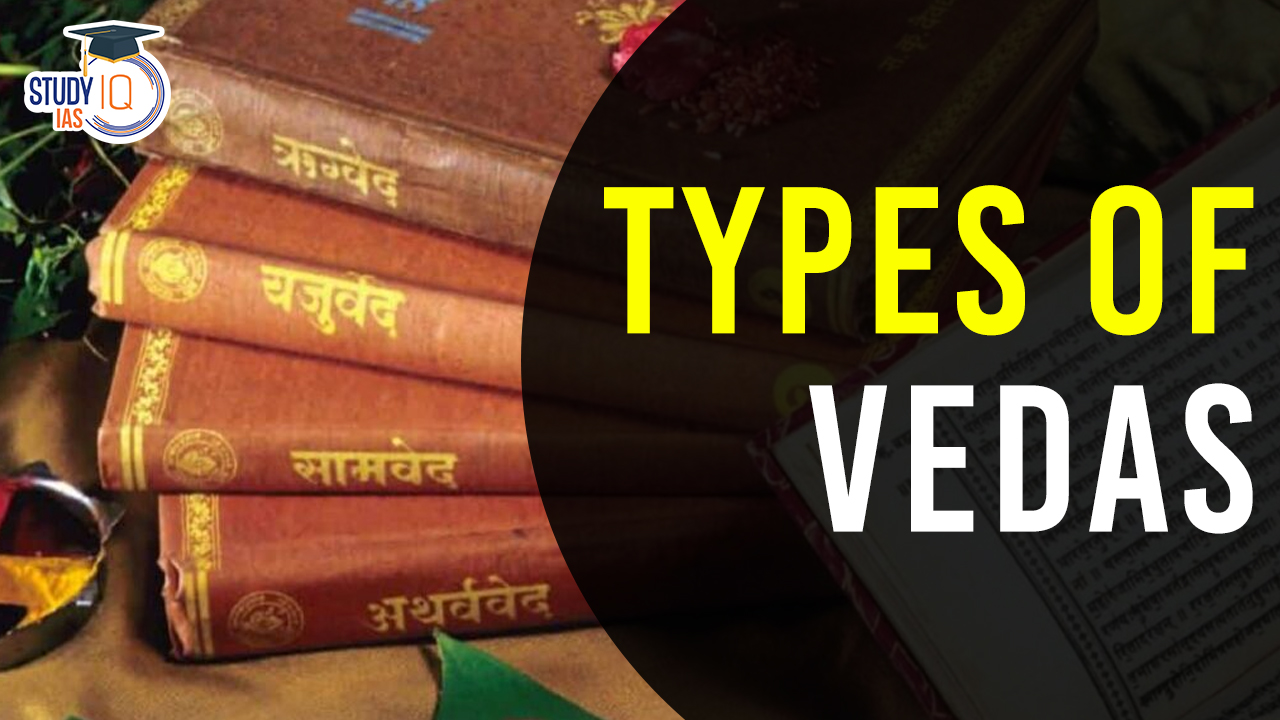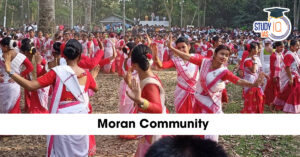Table of Contents
Types of Vedas- The Rigveda, Samaveda, Yajurveda, and Atharvaveda constitute the four distinct categories of Vedas, regarded as the oldest and most sacred texts in Hinduism. These scriptures are believed to be divine revelations received by ancient sages and transmitted through generations via oral tradition. Beyond serving as founts of spiritual wisdom, the Vedas also house valuable insights into ancient Indian culture, society, and history. In this article, we will delve into the characteristics of each Veda, exploring their significance in the tapestry of Hinduism.
We’re now on WhatsApp. Click to Join
What is a Veda?
Comprising the Rigveda, Yajurveda, Samaveda, and Atharvaveda, the four types of Vedas derive their name from the Sanskrit term ‘vid,’ meaning knowledge. In Hinduism, the Vedas are revered as the primary founts of knowledge, regarded as sacred texts containing the universe’s profound secrets. According to Hindu belief, these divine revelations were bestowed upon ancient sages, or ‘rishis,’ by the gods during profound meditation. The sages, in turn, transmitted this sacred knowledge through oral tradition to their disciples, ensuring the preservation of the Vedas for millennia.
Types of Vedas
The Vedas constitute a compilation of hymns, prayers, and rituals, developed over several centuries. Written in Sanskrit, an ancient Indian language, these texts transcend mere religious significance, offering valuable insights into Indian history, culture, and society. Each of the four main types of Vedas possesses distinct features:
| Name of the Veda | Key Features of the Veda |
| Rig Veda | Earliest form of Veda |
| Samaveda | Earliest reference for singing |
| Yajurveda | Also known as the Book of Prayers |
| Atharvaveda | The Book of Magic and Charms |
Rigveda
- Age and Composition:
- The Rigveda is the oldest of the Vedas, believed to have been composed between 1500-1200 BCE.
- It originated in the north-western region of the Indian subcontinent.
- Content:
- Comprises hymns (sukta), prayers, and rituals.
- Primarily recited during yajnas or sacrificial rituals.
- Structure:
- Contains over 10,000 verses.
- Divided into ten books or mandalas, each addressing specific deities and themes.
- Language:
- Written in Vedic Sanskrit.
- Deities:
- Hymns are dedicated to various gods and goddesses, including Indra, Agni, Varuna, Soma, and others.
- Philosophical Content:
- Renowned for philosophical and spiritual hymns.
- Explores concepts such as the nature of the universe, the cycle of life and death, and the idea of karma.
- Influence:
- Considered the foundation of Hinduism.
- Has influenced religious traditions within India and globally.
- Transmission:
- Traditionally passed down through oral tradition.
- Later transcribed during the Vedic period.
- Global Impact:
- Translated into numerous languages, studied worldwide.
- An essential source for understanding ancient Indian society, culture, and history.
Samaveda
- Musical Emphasis:
- Known for its musical notation and chanting.
- Contains melodies (saman) associated with rituals and sacrifices.
- Source Material:
- Often draws verses from the Rigveda but arranges them for singing rather than recitation.
- Integral to the Sama Veda Samhita, which contains the chants.
Yajurveda
- Book of Prayers:
- Referred to as the “Book of Prayers.”
- Provides instructions for the performance of rituals and ceremonies, especially sacrifices (yajnas).
- Branches:
- Divided into two main branches: the White Yajurveda (Shukla Yajurveda) and the Black Yajurveda (Krishna Yajurveda).
Atharvaveda
- Magical and Charms:
- Known as the “Book of Magic and Charms.”
- Addresses practical aspects of daily life, including healing, protection, and domestic rituals.
- Folkloric Aspect:
- Reflects a more folkloric and shamanistic aspect of Vedic traditions.
- Accessibility:
- Considered more accessible to common people due to its practical concerns.
Other literature related to Vedas
Vedangas
The Vedangas are crucial bodies of supplementary literature closely associated with the Vedas. They serve to expound the sciences necessary for understanding and applying the Vedas. There are six Vedangas:
- Kalpa (Ritual Detail):
-
- Purpose: Provides detailed instructions for the performance of Vedic rituals and ceremonies.
- Components: Divided into three branches – Shrauta Sutras (dealing with public ceremonies), Grihya Sutras (domestic ceremonies), and Dharma Sutras (ethical and legal principles).
- Siksha (Pronunciation):
-
- Purpose: Focuses on the correct pronunciation and phonetics of Vedic mantras.
- Importance: Essential for maintaining the purity and efficacy of Vedic recitation.
- Vyakarana (Grammar):
-
- Purpose: Deals with the grammar and linguistic structure of the Vedic texts.
- Significance: Aids in the precise understanding and interpretation of Vedic verses.
- Nirukti (Etymology):
-
- Purpose: Concerned with the etymology and interpretation of difficult or archaic words in the Vedas.
- Importance: Facilitates a deeper comprehension of Vedic language and meanings.
- Chandas (Meter):
-
- Purpose: Focuses on the meters and poetic forms employed in Vedic compositions.
- Significance: Helps in the proper recitation and rhythmic understanding of Vedic verses.
- Jyotisha (Astronomy/Astrology):
-
- Purpose: Explores the astronomical and astrological aspects related to the timing of Vedic rituals.
- Importance: Aids in determining auspicious times for various ceremonies.
Upavedas
The Upavedas are considered smriti (traditional knowledge) and are supplementary to the Vedas. They deal with four traditional arts and sciences:
- Ayurveda (Medicine):
-
- Association: Connected with the Atharvaveda.
- Purpose: Deals with the principles of holistic health, including medicine, diet, and surgery.
- Gandharva-Veda (Music and Dance):
-
- Association: Associated with the Samaveda.
- Purpose: Focuses on the theory and practice of music, dance, and performing arts.
- Dhanur-Veda (Warfare):
-
- Association: Linked with the Yajurveda.
- Purpose: Concerned with the art of warfare, including strategy, weaponry, and martial skills.
- Shilpa-Veda (Architecture):
-
- Association: Associated with the Rigveda.
- Purpose: Explores the principles of architecture, including town planning, construction, and sculpture.
Types of Vedas UPSC
The Vedas, foundational scriptures in Hinduism, encompass four principal types: Rigveda, the oldest and essential collection of hymns; Samaveda, emphasizing musical notation for rituals; Yajurveda, serving as the guide for ritual procedures and prayers; and Atharvaveda, dedicated to magical chants and practical aspects of daily life. These ancient texts, composed in Vedic Sanskrit between 1500-1200 BCE, not only form the spiritual backbone of Hinduism but also offer profound insights into philosophy, cosmology, and the societal fabric of ancient India. The Vedas have significantly influenced diverse religious traditions and remain vital sources for understanding cultural history.


 Poompuhar Port: Ancient Sangam-Era Marit...
Poompuhar Port: Ancient Sangam-Era Marit...
 UNESCO World Heritage Sites of India Lis...
UNESCO World Heritage Sites of India Lis...
 Moran Community of Assam, History, Langu...
Moran Community of Assam, History, Langu...

























